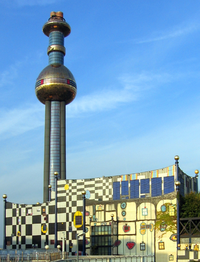
Photo from wikipedia
Electrical electronics constitute a significant quantity of municipal solid wastes which are discarded after use in open dumpsites especially in the developing countries. The aim of this study was to… Click to show full abstract
Electrical electronics constitute a significant quantity of municipal solid wastes which are discarded after use in open dumpsites especially in the developing countries. The aim of this study was to characterise the material and chemical components, evaluate current management practices and investigate recovery of lead from battery electrodes (BEs) of waste rechargeable electric lamps (RLs). Twenty-six waste RLs of different models were sampled in Nigeria and characterised. Their BEs were analysed for Pb, Cr, Mn, Cu, Zn, Ni and Fe after acid digestion. Questionnaires were distributed to unselected respondents to assess usage and disposal of the lamps. Reaction of citric acid solutions with Pb in the presence of H2O2 was used for the recovery of Pb. 69 % of the respondents disposed their waste RLs in open dumpsites. The mean ± SD concentrations of Pb, Cr, Mn, Cu, Zn, Ni and Fe in the BEs were 600 ± 0.2 g/kg, 65.4 ± 40 mg/kg, 5.05 ± 4.0 mg/kg, 6.81 ± 5.0 mg/kg, 5.98 ± 3.0 mg/kg, 50.0 ± 30 mg/kg and 40.2 ± 35 mg/kg, respectively. The results show that the batteries are lead-acid batteries which require management. At the optimal conditions of S/L = 0.14, temperature = 20 °C and leaching time = 5 h, about 95 % Pb was recovered in form of lead citrate from the battery. High recovery of Pb is possible with simple and environment-friendly reactions.
Journal Title: Journal of Material Cycles and Waste Management
Year Published: 2017
Link to full text (if available)
Share on Social Media: Sign Up to like & get
recommendations!